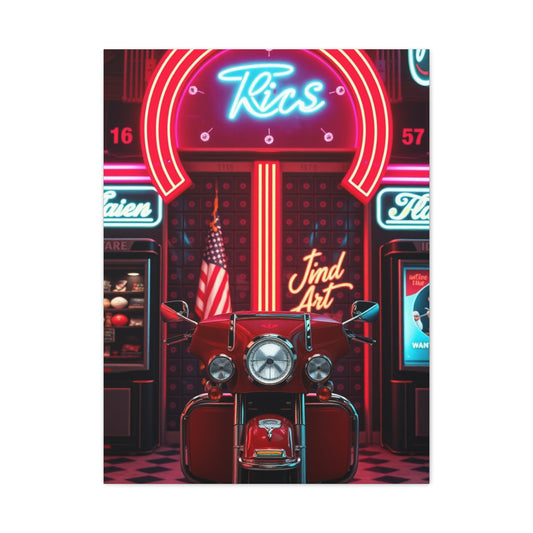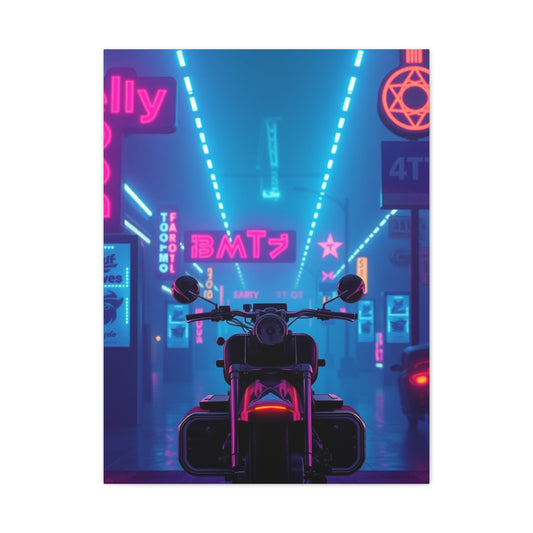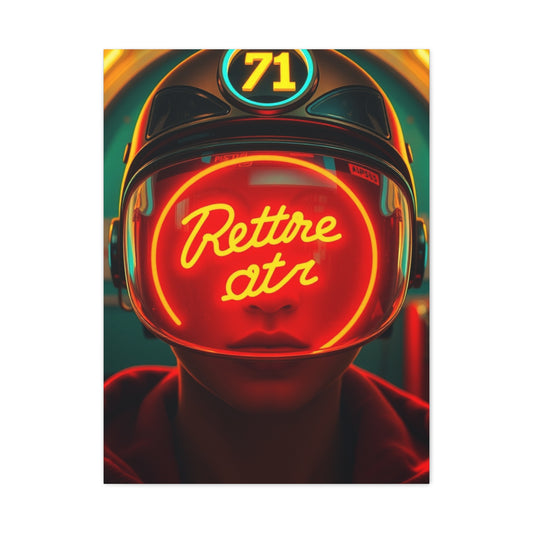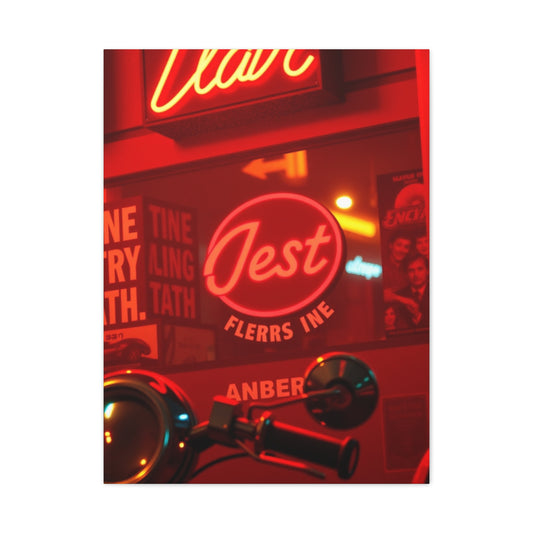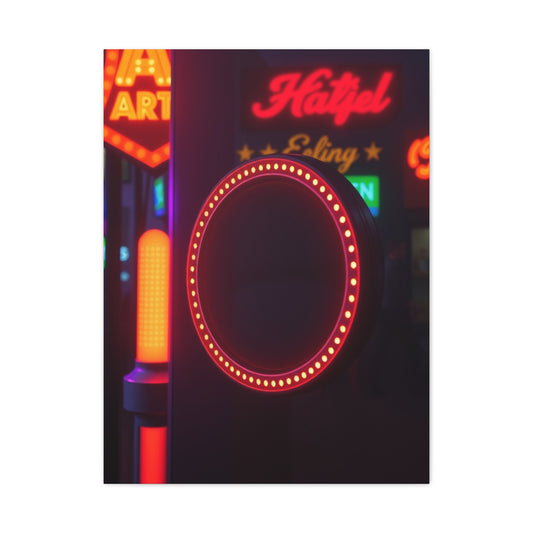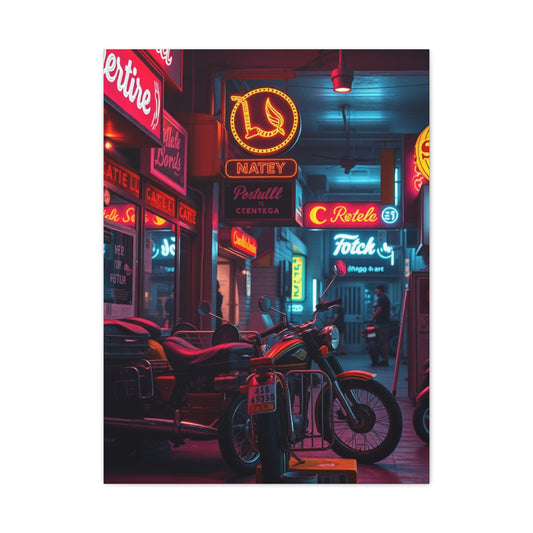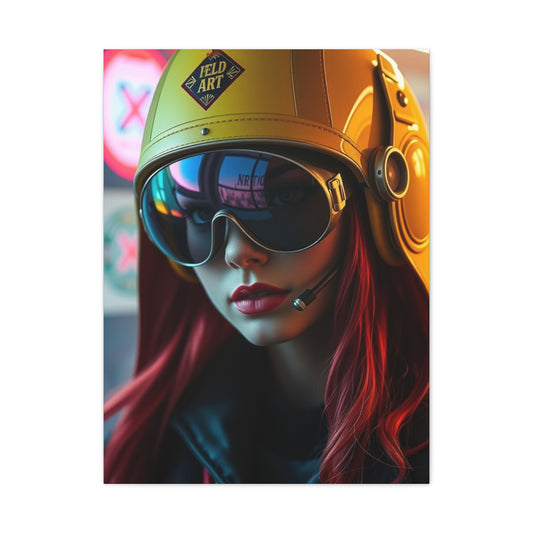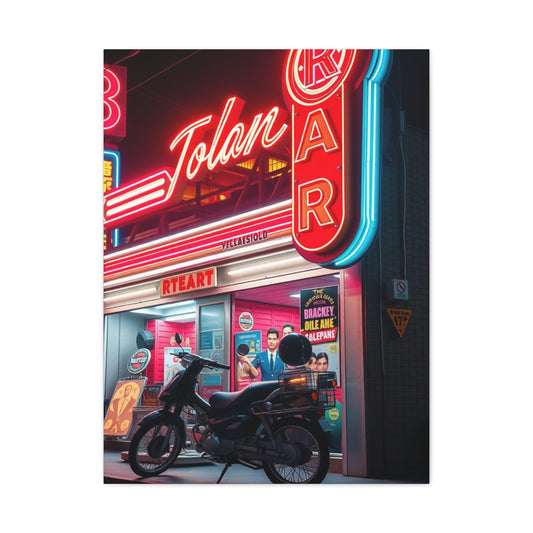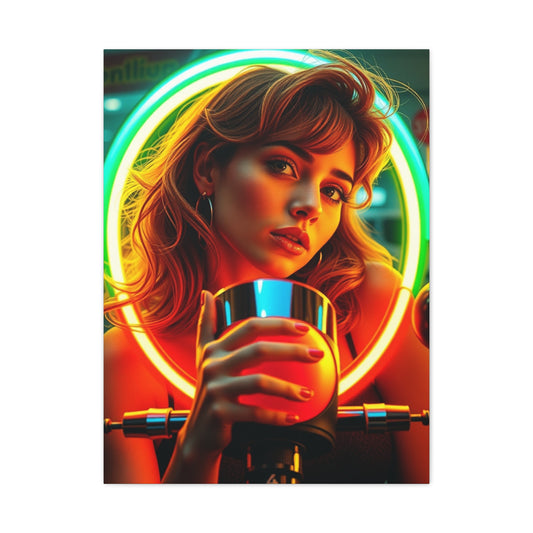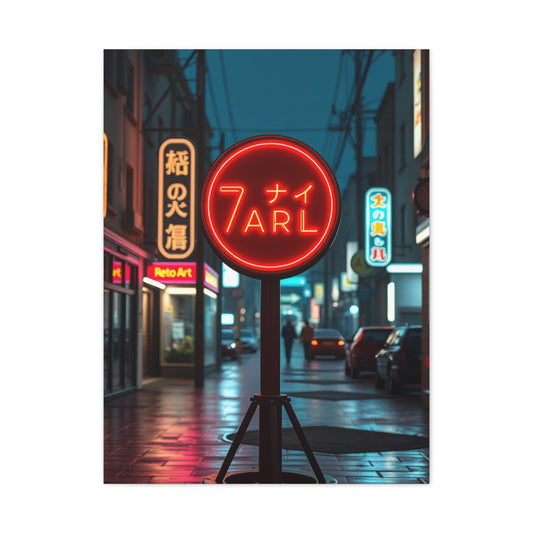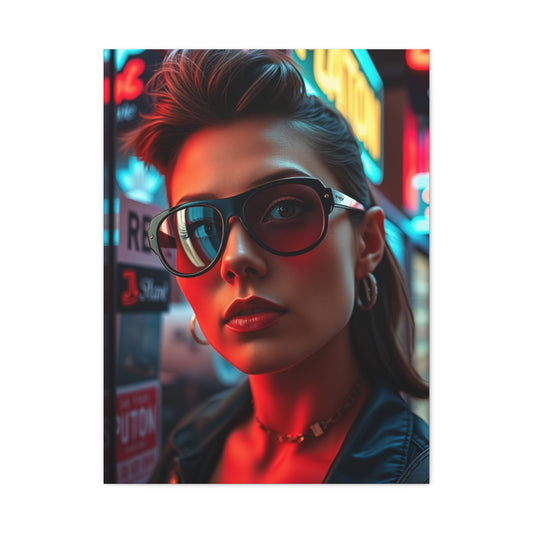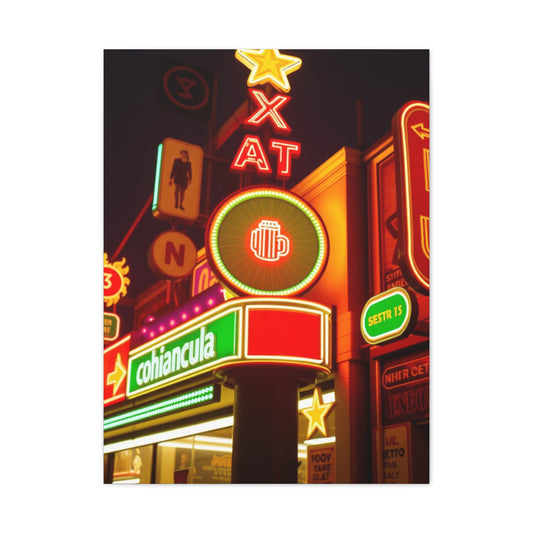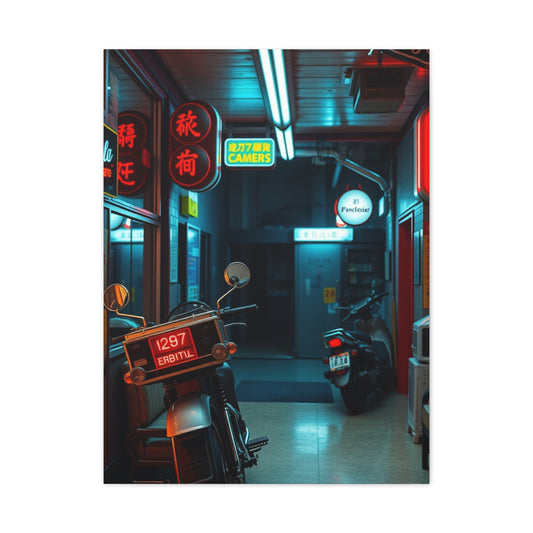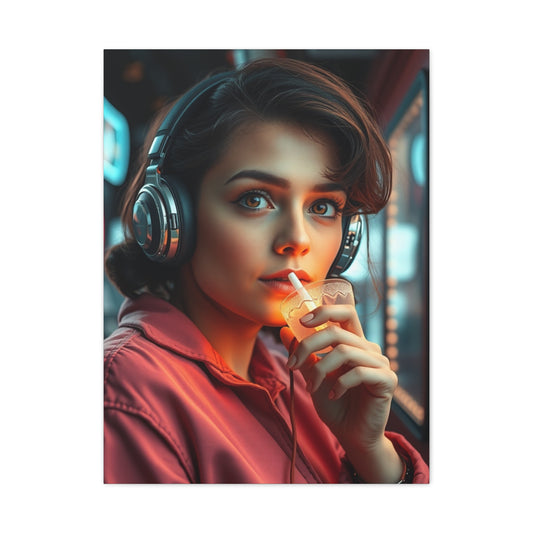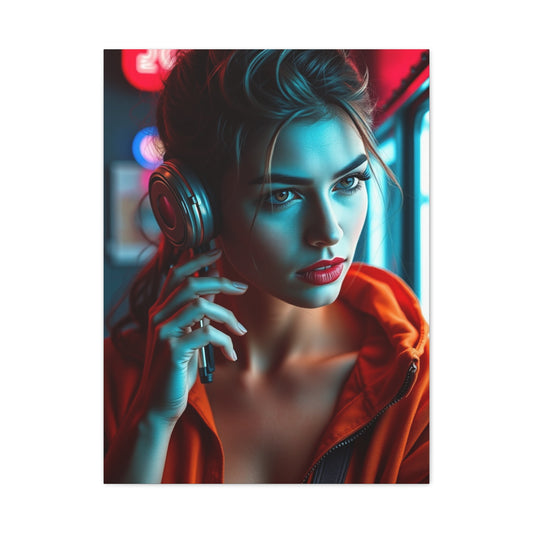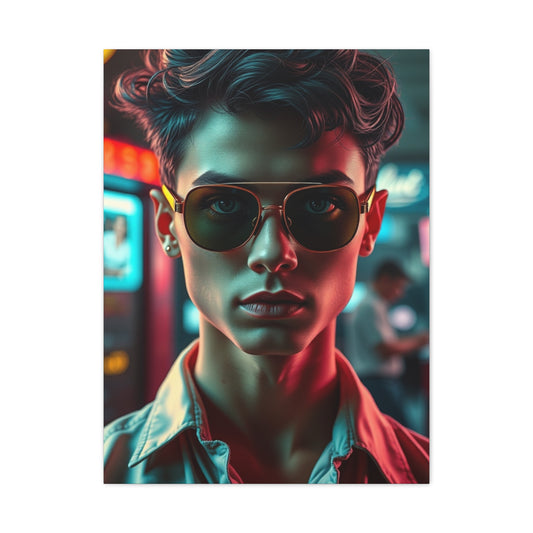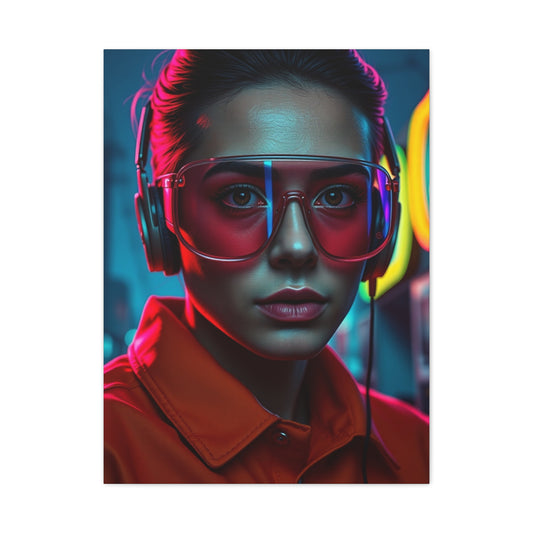The Charm of Retro Wall Art: A Guide to Vintage Décor Magic
Retro wall art represents a fascinating journey through decades of artistic expression, capturing the essence of bygone eras while maintaining contemporary relevance. The concept emerged from humanity's natural inclination to preserve and celebrate cultural moments that defined generations. This decorative movement encompasses various periods, from the glamorous Art Deco of the 1920s to the psychedelic patterns of the 1960s and the neon-bright aesthetics of the 1980s.
The phenomenon of vintage-inspired decoration began gaining momentum in the post-war era when society sought comfort in familiar imagery and nostalgic themes. Artists and designers recognized the emotional connection people maintained with visual elements from their past, leading to the systematic preservation and reproduction of iconic imagery. This movement transcended mere nostalgia, evolving into a sophisticated art form that celebrates craftsmanship, cultural significance, and aesthetic beauty.
During the mid-20th century, mass production capabilities allowed for widespread distribution of decorative pieces that captured the spirit of earlier decades. Manufacturers began creating reproductions of classic advertisements, movie posters, and artistic movements, making these treasures accessible to broader audiences. The democratization of vintage aesthetics transformed how people approached home decoration, shifting from purely functional spaces to environments that reflected personal taste and cultural appreciation.
The evolution continued through various cultural waves, with each generation rediscovering and reinterpreting past artistic movements. The 1970s saw renewed interest in Victorian and Edwardian styles, while the 1980s embraced Art Deco sophistication. This cyclical pattern established vintage decoration as a permanent fixture in home design philosophy, proving that quality artistic expression transcends temporal boundaries.
Contemporary collectors and enthusiasts continue expanding the definition of retro wall art, incorporating emerging vintage periods like the 1990s and early 2000s. This ongoing evolution ensures that the movement remains dynamic, constantly refreshing its source material while maintaining core principles of quality, cultural significance, and aesthetic appeal.
Distinctive Characteristics of Vintage Decorative Pieces
Retro wall art possesses several defining characteristics that distinguish it from contemporary artistic expressions. The most prominent feature involves color palettes that reflect specific time periods, utilizing hues and combinations that were popular during particular decades. These carefully selected color schemes evoke immediate emotional responses, transporting viewers to specific moments in cultural memory.
Typography plays a crucial role in vintage aesthetic appeal, with letterforms and graphic treatments that mirror historical design sensibilities. Font choices range from elegant Art Deco scripts to bold sans-serif typefaces of the modernist movement, each carrying distinctive personality and cultural context. The careful selection and arrangement of text elements contribute significantly to the overall authenticity and impact of vintage decorative pieces.
Visual composition in retro wall art often emphasizes symmetry, balance, and geometric patterns that were characteristic of specific periods. Art Deco pieces feature angular lines and metallic accents, while mid-century modern works showcase organic curves and atomic-age motifs. These compositional elements create instant recognition and establish clear connections to their respective eras.
Material choices and production methods also define authentic vintage aesthetics. Original pieces often showcase the craftsmanship techniques and materials available during their creation period, including specific printing processes, paper types, and finishing methods. Contemporary reproductions strive to replicate these characteristics, using similar materials and techniques to maintain authenticity and visual appeal.
Subject matter in vintage decorative art frequently reflects the social attitudes, aspirations, and cultural values of specific time periods. Advertisements from the 1950s demonstrate post-war optimism and suburban ideals, while 1960s psychedelic art captures the era's experimental spirit and social revolution. This historical context adds layers of meaning and significance that extend beyond mere aesthetic appreciation.
Iconic Periods and Movements in Vintage Decoration
The Art Deco movement of the 1920s and 1930s established many foundational principles that continue influencing retro wall art today. Characterized by geometric patterns, luxurious materials, and streamlined forms, Art Deco represented optimism, progress, and sophistication. Decorative pieces from this era feature bold lines, metallic accents, and stylized figures that embody the machine age aesthetic.
Mid-century modern design, spanning from the 1940s through the 1960s, introduced organic forms, atomic motifs, and space-age imagery that reflected post-war optimism and scientific advancement. This period produced iconic furniture, architecture, and decorative arts that emphasized clean lines, functional beauty, and innovative materials. Wall art from this era often features boomerang patterns, starburst designs, and atomic symbols that capture the excitement of the nuclear age.
The psychedelic movement of the 1960s revolutionized visual culture with its bold colors, optical illusions, and countercultural themes. Concert posters, album covers, and decorative art from this period challenged conventional design principles, embracing experimentation and pushing boundaries of visual expression. These pieces often feature swirling patterns, impossible perspectives, and vivid color combinations that create immersive visual experiences.
Pop Art emerged during the 1950s and 1960s, transforming commercial imagery and everyday objects into high art. Artists like Andy Warhol and Roy Lichtenstein elevated advertising graphics, comic book imagery, and consumer products to gallery status, creating a new appreciation for commercial design aesthetics. This movement significantly influenced retro wall art, establishing the validity of commercial imagery as legitimate decorative content.
The Memphis Group design movement of the 1980s introduced radical geometric forms, bright colors, and postmodern sensibilities that challenged established design conventions. This Italian design collective created furniture and decorative objects that featured bold patterns, unconventional proportions, and playful aesthetics that influenced a generation of designers and continues inspiring contemporary retro wall art.
Categorizing Vintage Decorative Styles
Retro wall art encompasses numerous subcategories, each representing distinct aesthetic approaches and cultural influences. Propaganda posters from various political movements demonstrate the power of graphic design to communicate complex messages through simplified imagery and bold typography. These pieces often feature strong symbolic elements, patriotic themes, and persuasive visual techniques that make them compelling decorative choices.
Travel posters from the golden age of tourism capture the romance and excitement of exotic destinations through idealized imagery and elegant typography. These promotional pieces often feature stylized landscapes, architectural landmarks, and cultural symbols that evoke wanderlust and adventure. The artistic quality of vintage travel posters has made them highly sought-after decorative pieces that add sophistication to any space.
Movie posters from classic Hollywood films represent another significant category of retro wall art. These promotional materials showcase the glamour, drama, and artistic sensibilities of different cinematic eras. From the painted romanticism of 1940s film noir posters to the bold graphics of 1970s action films, movie posters provide windows into entertainment culture and artistic trends.
Advertising art from consumer products offers fascinating glimpses into social attitudes, lifestyle aspirations, and marketing techniques of past decades. Vintage advertisements for automobiles, household products, fashion, and food demonstrate evolving design sensibilities while documenting cultural values and social norms. These pieces often feature idealized family scenarios, product demonstrations, and lifestyle promises that reveal historical context.
Concert and music posters represent a vibrant category of retro wall art that captures the energy and creativity of live performance culture. From elegant jazz club announcements to psychedelic rock concert posters, these promotional pieces often push artistic boundaries while serving practical purposes. The artistic freedom typically afforded to music poster designers resulted in some of the most innovative and visually striking examples of commercial art.
Materials and Production Methods
Understanding the materials and production methods used in vintage wall art enhances appreciation for these decorative pieces while informing contemporary reproduction efforts. Original lithographic printing processes created distinct visual characteristics that modern collectors and enthusiasts seek to preserve or replicate. The stone lithography technique produced subtle color variations and unique textures that contributed to the authentic appearance of vintage posters and prints.
Screen printing, or serigraphy, emerged as a popular production method for poster art, particularly during the 1960s counterculture movement. This process allowed for bold, saturated colors and sharp graphic elements that were ideal for psychedelic and concert poster designs. The layering technique inherent in screen printing created visual depth and richness that became characteristic of the era's aesthetic.
Paper selection played a crucial role in the final appearance and longevity of vintage wall art. Different paper weights, textures, and compositions affected how inks absorbed and aged over time. Understanding these material choices helps contemporary collectors assess authenticity and condition while informing reproduction efforts that seek to recreate original aesthetics.
Printing inks and pigments used in vintage production often possessed unique characteristics that contributed to the distinctive appearance of retro wall art. Color formulations, fade resistance, and chemical compositions varied significantly between eras, creating visual signatures that help identify authentic pieces. Modern reproductions must consider these factors when attempting to recreate authentic vintage appearances.
Finishing techniques such as varnishing, lamination, and mounting methods also influenced the final presentation and preservation of vintage decorative pieces. These processes affected surface texture, reflectivity, and durability, contributing to the overall aesthetic impact. Contemporary collectors and creators must understand these finishing methods to properly preserve and display vintage wall art.
Color Theory in Vintage Aesthetics
Color psychology plays a fundamental role in the emotional impact and cultural significance of retro wall art. Each era developed distinctive color palettes that reflected available pigments, cultural preferences, and symbolic associations. The warm earth tones of 1970s design conveyed natural harmony and environmental consciousness, while the neon brights of 1980s aesthetics expressed energy, optimism, and technological advancement.
The limited color printing capabilities of earlier periods created distinctive aesthetic characteristics that modern collectors and designers seek to preserve or emulate. Two-color and three-color printing processes produced unique visual effects through careful color selection and overprinting techniques. These limitations fostered creative solutions that became defining features of specific periods and styles.
Color symbolism in vintage decorative art often reflected social attitudes and cultural values of specific time periods. Red, white, and blue combinations in wartime posters conveyed patriotic themes, while the psychedelic rainbow palettes of the 1960s expressed experimental and rebellious attitudes. Understanding these symbolic associations enhances appreciation for the cultural context of vintage wall art.
Seasonal and environmental color influences also shaped vintage aesthetic preferences. The golden yellows and burnt oranges popular in 1970s design reflected renewed interest in natural environments and seasonal cycles. Similarly, the cool blues and silvers of atomic age design expressed fascination with space exploration and scientific advancement.
Contemporary color matching and reproduction present unique challenges when creating authentic-looking vintage wall art. Modern printing processes and pigment formulations may not exactly replicate historical color characteristics, requiring careful calibration and adjustment to achieve desired aesthetic effects. Specialized knowledge of color theory and printing processes becomes essential for successful vintage reproduction projects.
Typography and Lettering in Retro Design
Typography serves as one of the most recognizable elements of vintage aesthetic appeal, with specific letterforms and graphic treatments instantly evoking particular time periods and cultural movements. The elegant, flowing scripts of Art Deco design conveyed luxury and sophistication, while the bold, geometric typefaces of modernist movements expressed efficiency and progress.
Hand-lettered elements in vintage wall art demonstrate the craftsmanship and artistic skill that preceded widespread digital typography. These carefully crafted letterforms possess unique character variations and human imperfections that contribute to their authentic charm and emotional appeal. The subtle irregularities in hand-lettered vintage pieces create warmth and personality that machine-perfect digital typography often lacks.
The relationship between typography and imagery in retro wall art demonstrates sophisticated understanding of visual hierarchy and communication principles. Successful vintage designs carefully balance text and graphic elements to create clear, memorable messages while maintaining aesthetic appeal. This integration of typography and illustration became a defining characteristic of effective commercial art from various periods.
Font selection in vintage design often reflected broader cultural movements and artistic philosophies. The clean, sans-serif typefaces of mid-century modern design aligned with functionalist principles and scientific rationality, while the ornate, decorative fonts of earlier periods expressed traditional craftsmanship values and artistic elaboration.
Contemporary digital font libraries now include numerous revivals and interpretations of classic vintage typefaces, making these distinctive letterforms accessible to modern designers and enthusiasts. However, successful vintage typography requires more than font selection; proper spacing, sizing, and compositional integration remain essential for achieving authentic period aesthetics.
Subject Matter and Thematic Content
The subject matter featured in retro wall art provides fascinating insights into the social values, aspirations, and cultural preoccupations of different historical periods. Transportation themes, particularly automobiles and aviation, dominated much of mid-20th century decorative art, reflecting society's fascination with mobility, progress, and technological advancement. These images conveyed excitement about the future while celebrating engineering achievements.
Domestic life and family themes appeared frequently in vintage advertising art, presenting idealized visions of suburban prosperity and social harmony. These depictions often reflected prevailing gender roles and social expectations while promoting consumer products designed to enhance domestic comfort and convenience. The artistic treatment of these themes reveals cultural attitudes toward family structure, social responsibility, and lifestyle aspirations.
Entertainment and leisure subjects formed another major category of vintage wall art, from elegant depictions of dining and social gatherings to dynamic representations of sports and recreational activities. These images promoted lifestyle ideals while reflecting changing social attitudes toward work, leisure, and personal fulfillment. The artistic interpretation of entertainment themes often emphasized glamour, excitement, and social status.
Nature and landscape imagery in vintage decorative art frequently portrayed idealized natural environments that contrasted with increasing urbanization and industrialization. These pastoral scenes offered escape from modern pressures while celebrating natural beauty and environmental harmony. The stylized treatment of landscape subjects often emphasized emotional appeal over realistic representation.
Cultural and ethnic themes in vintage wall art reflected both the diversity and the limitations of different historical periods. While some pieces celebrated cultural heritage and diversity, others reflected the prejudices and stereotypes of their times. Understanding these historical contexts enhances appreciation for how social attitudes have evolved while providing important cultural documentation.
Collecting and Authenticating Vintage Pieces
Collecting authentic vintage wall art requires specialized knowledge of production methods, historical context, and market values. Serious collectors develop expertise in identifying original pieces versus reproductions, understanding the subtle differences in materials, printing processes, and aging characteristics that distinguish genuine vintage items from contemporary copies.
Authentication involves examining multiple factors including paper composition, printing quality, color characteristics, and physical condition. Original lithographic prints possess distinctive textural qualities and color depth that modern reproductions struggle to replicate exactly. Experienced collectors learn to recognize these subtle differences through careful study and hands-on examination of known authentic pieces.
Provenance documentation adds significant value and authenticity to vintage wall art collections. Original purchase records, exhibition history, and previous ownership information help establish legitimacy while providing interesting historical context. Pieces with well-documented histories often command premium prices and generate greater collector interest.
Condition assessment plays a crucial role in determining the value and display potential of vintage decorative pieces. Factors such as fading, staining, tears, and previous restoration attempts all affect both aesthetic appeal and monetary worth. Collectors must balance condition concerns with rarity and historical significance when making acquisition decisions.
Market trends and pricing patterns in vintage wall art reflect broader cultural interests and collecting fashions. Certain periods and styles experience cyclical popularity that influences availability and prices. Successful collectors develop understanding of these market dynamics while focusing on pieces that provide personal satisfaction regardless of potential investment returns.
Reproduction and Contemporary Creation
Modern reproduction methods allow widespread access to vintage aesthetic appeal while preserving original pieces from handling and display damage. High-quality digital scanning and printing processes can create faithful reproductions that capture most visual characteristics of original vintage wall art, making these designs accessible to broader audiences.
Contemporary artists and designers continue creating new works inspired by vintage aesthetics, expanding the retro wall art category beyond historical reproductions. These modern interpretations often combine classic visual elements with contemporary themes and sensibilities, creating fresh perspectives on familiar stylistic approaches.
Ethical considerations surrounding reproduction and attribution become important factors in the contemporary vintage wall art market. Proper crediting of original artists and designers, when known, demonstrates respect for creative contributions while providing historical context. Some reproduction projects actively research and document the creators of previously anonymous commercial art.
Quality control in reproduction projects requires attention to color accuracy, material selection, and finishing techniques that respect the original aesthetic intentions. Inferior reproductions may capture basic visual elements while missing subtle characteristics that contribute to authentic vintage appeal. Successful reproduction efforts invest in high-quality materials and processes that honor original craftsmanship standards.
Limited edition and numbered reproductions create scarcity value while making vintage-inspired art more accessible than original pieces. These marketing approaches balance commercial viability with collector appeal, often featuring special printing processes, premium materials, or unique presentation formats that distinguish them from mass-market reproductions.
Framing and Presentation Considerations
Proper framing and presentation significantly enhance the visual impact and preservation potential of retro wall art. Period-appropriate frame styles can reinforce vintage aesthetics while providing necessary protection from environmental damage. Understanding the framing conventions of different eras helps create authentic presentations that complement the artistic content.
Matting and mounting techniques must balance aesthetic appeal with preservation requirements. Acid-free materials prevent chemical damage while appropriate spacing and proportions enhance visual presentation. The color and texture of matting materials should complement the artwork without overwhelming or competing with the primary visual elements.
Lighting considerations become particularly important when displaying vintage wall art, as many original pieces may be sensitive to ultraviolet radiation and excessive brightness. Proper illumination enhances color vibrancy and detail visibility while minimizing potential damage from harmful light exposure. Modern LED lighting systems offer controllable, low-heat options ideal for artwork display.
Environmental factors such as humidity, temperature, and air quality affect the long-term preservation of vintage decorative pieces. Climate-controlled display environments help prevent deterioration while maintaining stable conditions that preserve color integrity and structural stability. Understanding these preservation requirements helps collectors protect their investments while enjoying their aesthetic appeal.
Grouping and arrangement strategies can create dynamic displays that showcase individual pieces while creating cohesive visual presentations. Careful consideration of scale, color relationships, and thematic connections helps create engaging wall arrangements that maximize decorative impact. The spacing and positioning of multiple pieces requires balancing individual visibility with overall compositional harmony.
Room-Specific Placement Strategies
Different rooms within residential and commercial spaces offer unique opportunities and challenges for displaying retro wall art. Living rooms and common areas typically accommodate larger pieces or grouped arrangements that can serve as focal points for social gatherings. The scale and subject matter of vintage decorative pieces should complement furniture arrangements and traffic patterns while creating inviting atmospheres.
Kitchen and dining areas provide excellent venues for food and beverage-themed vintage advertising art. These functional spaces can incorporate decorative elements that enhance the culinary experience while adding personality and charm. The humidity and temperature variations common in kitchen environments require consideration when selecting and protecting vintage pieces.
Bedroom spaces often benefit from more intimate and personal vintage art selections that create relaxing, private atmospheres. Softer color palettes and romantic or peaceful subject matter work well in sleeping areas, while bold or stimulating designs might be better suited for other locations. The scale of bedroom wall art should complement furniture proportions without overwhelming the space.
Home office and study areas can incorporate vintage pieces that inspire creativity, productivity, or reflect professional interests. Travel posters, architectural prints, or cultural artifacts can create stimulating work environments while expressing personal taste and interests. The lighting requirements for work spaces should complement artwork display needs.
Hallways and transitional spaces offer opportunities to display vintage art series or create gallery-like presentations that guide movement through living spaces. These areas often accommodate smaller individual pieces or linear arrangements that complement architectural features while adding visual interest to otherwise utilitarian spaces.
Creating Cohesive Vintage-Inspired Spaces
Developing cohesive vintage-inspired environments requires careful coordination of decorative elements, color schemes, and stylistic approaches. Successful vintage-themed spaces balance authentic period elements with contemporary functionality and comfort. The goal involves creating environments that feel genuinely inspired by specific eras without appearing like museum displays or theatrical sets.
Color coordination between wall art and other decorative elements helps create harmonious environments that feel intentionally designed rather than accidentally assembled. Understanding the color palettes characteristic of different vintage periods enables designers to make informed choices about paint colors, textiles, and accessories that complement selected artwork.
Furniture selection and arrangement should support and enhance vintage wall art displays while maintaining practical functionality. Mid-century modern furniture pairs naturally with atomic age artwork, while Art Deco pieces complement geometric and metallic decorative elements. The scale and proportions of furniture should balance with wall art dimensions to create pleasing visual relationships.
Lighting design becomes particularly important in vintage-inspired spaces, as different eras featured distinct lighting styles and preferences. Pendant lights, table lamps, and accent lighting can reinforce period aesthetics while providing functional illumination for artwork display. The warm, incandescent lighting popular in many vintage periods often enhances the color characteristics of retro wall art.
Accessory selection and placement help complete vintage-inspired environments while avoiding overwhelming or competing with wall art displays. Carefully chosen decorative objects, textiles, and functional items can reinforce period themes while maintaining visual hierarchy that keeps wall art as focal points rather than background elements.
Cultural Impact and Social Significance
Retro wall art serves as cultural documentation, preserving visual records of social attitudes, lifestyle aspirations, and artistic movements from various historical periods. These decorative pieces function as windows into past societies, revealing information about daily life, popular culture, and social values that might otherwise be forgotten or overlooked.
The collecting and displaying of vintage decorative art reflects contemporary society's relationship with its cultural heritage and historical memory. The popularity of retro aesthetics suggests a desire to connect with perceived authenticity and craftsmanship quality that may seem lacking in contemporary commercial design. This nostalgic appreciation indicates complex cultural attitudes toward progress, tradition, and identity.
Social media and digital platforms have significantly expanded awareness and appreciation of vintage wall art, creating global communities of collectors, enthusiasts, and creators who share information and inspiration. These online networks have democratized access to specialized knowledge while creating new markets and opportunities for vintage-inspired creativity.
The influence of retro wall art extends beyond home decoration into fashion, graphic design, and commercial branding. Many contemporary companies and organizations adopt vintage aesthetic elements to convey authenticity, quality, and cultural sophistication. This commercial adoption demonstrates the continued relevance and appeal of historical design sensibilities.
Educational institutions and cultural organizations increasingly recognize the value of vintage commercial art as legitimate subjects for academic study and museum exhibition. This scholarly attention validates the artistic merit and cultural significance of previously dismissed commercial decorative pieces while fostering greater appreciation for graphic design heritage.
Market Trends and Investment Potential
The vintage wall art market has experienced significant growth and evolution as collecting interest has expanded beyond traditional fine art boundaries. Certain categories and periods have demonstrated strong appreciation potential while others remain relatively stable or accessible. Understanding market dynamics helps collectors make informed decisions while building meaningful collections.
Rarity and condition remain primary value drivers in the vintage decorative art market, with original pieces in excellent condition commanding premium prices. However, cultural significance and aesthetic appeal often override pure rarity considerations, as collectors frequently prefer historically important or visually striking pieces over merely scarce items.
Demographic trends influence collecting patterns and market preferences, with different generations gravitating toward specific periods and styles that reflect their cultural experiences and aesthetic preferences. Baby boomers often favor mid-century modern and psychedelic pieces, while younger collectors may prefer 1980s and 1990s vintage materials.
Geographic variations in collecting interest and availability create regional market differences that affect pricing and accessibility. Certain styles and periods may be more popular or abundant in specific locations due to historical, cultural, or economic factors. Understanding these regional preferences helps collectors identify opportunities and assess market conditions.
Online marketplaces and digital platforms have transformed the vintage wall art trading environment, expanding access while creating new challenges for authentication and quality assessment. Successful collectors adapt to digital trading while maintaining traditional evaluation skills and building relationships with reputable dealers and auction houses.
Care and Preservation Practices
Proper care and preservation of retro wall art requires understanding the specific vulnerabilities and degradation mechanisms that affect different materials and production methods. Paper-based pieces face threats from light exposure, humidity fluctuations, chemical contamination, and physical handling that can cause irreversible damage over time.
Environmental monitoring and control provide the foundation for effective preservation programs. Maintaining stable temperature and humidity levels while minimizing exposure to ultraviolet radiation and air pollutants helps slow deterioration processes and extend the useful life of vintage decorative pieces. Professional conservation advice may be necessary for valuable or historically significant items.
Storage methods and materials significantly impact preservation outcomes for vintage wall art collections. Acid-free folders, boxes, and protective sleeves prevent chemical migration while providing physical protection during handling and storage. Proper storage organization also facilitates access while minimizing unnecessary handling of fragile pieces.
Cleaning and maintenance procedures must balance preservation needs with aesthetic presentation requirements. Gentle surface cleaning may be appropriate for some pieces while others require professional conservation treatment. Understanding the limits of safe do-it-yourself maintenance helps prevent accidental damage while maintaining collection condition.
Documentation and record-keeping support both preservation and appreciation goals by tracking condition changes, treatment history, and provenance information. Detailed photographic records help monitor deterioration over time while providing valuable reference materials for insurance and authentication purposes. Professional appraisal and documentation may be advisable for significant collections.
Contemporary Relevance and Modern Interpretations
The enduring popularity of retro wall art demonstrates its continued relevance in contemporary design and cultural expression. Modern interpretations often combine vintage aesthetic elements with current themes and sensibilities, creating fresh perspectives that honor historical traditions while addressing contemporary concerns and interests.
Sustainability considerations have influenced contemporary vintage-inspired art creation, with many artists and manufacturers emphasizing environmentally responsible materials and production methods. This approach aligns vintage aesthetics with modern environmental consciousness while appealing to consumers who value both style and sustainability.
Digital art and printing advances have expanded creative possibilities for vintage-inspired design while maintaining accessibility and affordability. Modern designers can experiment with historical styles while incorporating contemporary themes, creating hybrid works that bridge temporal boundaries and appeal to diverse audiences.
Cross-cultural influences have enriched contemporary retro wall art by incorporating non-Western vintage traditions and aesthetic approaches. This global perspective expands the definition of vintage appeal while creating more inclusive and diverse decorative options that reflect contemporary multicultural awareness.
Customization and personalization opportunities in modern vintage-inspired art allow individuals to create unique pieces that reflect personal interests while maintaining period aesthetic appeal. Custom vintage-style portraits, family commemoratives, and personalized propaganda-style pieces demonstrate how historical design principles can be adapted for contemporary personal expression.
Psychological Effects and Emotional Responses
The emotional impact of retro wall art extends beyond mere aesthetic appreciation to encompass complex psychological responses related to memory, identity, and cultural connection. Vintage decorative pieces often evoke nostalgia, even among individuals who did not personally experience the historical periods they represent, suggesting universal human responses to visual symbols of perceived authenticity and craftsmanship quality.
Color psychology research indicates that the specific palettes characteristic of different vintage periods can influence mood and behavior in measurable ways. The warm earth tones popular in 1970s design tend to create calming, natural atmospheres, while the bright, saturated colors of 1980s aesthetics often energize and stimulate viewers. Understanding these psychological effects helps inform placement and selection decisions.
The familiarity and recognition factors associated with iconic vintage imagery create comfortable, accessible environments that feel welcoming and non-threatening. This psychological safety may explain why vintage-themed restaurants, hotels, and retail spaces often succeed in creating positive customer experiences and emotional connections.
Social psychology research suggests that displaying vintage wall art can function as identity expression, communicating values related to quality, authenticity, cultural sophistication, and historical awareness. The selection and presentation of specific vintage pieces may serve as subtle social signaling that helps establish personal and cultural identity within social contexts.
Memory trigger effects of vintage decorative art can evoke personal recollections and emotional responses that enhance the meaning and significance of living spaces. These memory connections create deeper emotional investments in decorative choices while contributing to the sense of home and personal sanctuary that many people seek in their living environments.
Global Variations and Cultural Adaptations
Retro wall art traditions vary significantly across different cultures and geographic regions, reflecting local artistic traditions, historical experiences, and aesthetic preferences. European vintage design often emphasizes craftsmanship traditions and artistic sophistication, while American retro art frequently celebrates consumer culture and popular entertainment.
Asian vintage-inspired decorative art incorporates traditional artistic elements with mid-20th century modernist influences, creating unique hybrid styles that reflect cultural synthesis and global exchange. Japanese mid-century design, Chinese propaganda art, and Southeast Asian commercial graphics have developed distinctive characteristics while participating in broader international vintage movements.
Latin American vintage poster art often features bold colors, dynamic compositions, and cultural symbols that reflect regional artistic traditions and political experiences. These decorative pieces frequently combine indigenous design elements with international modernist influences, creating visually striking and culturally specific artistic expressions.
African vintage-inspired art draws from rich textile traditions, symbolic imagery, and colonial-period commercial graphics to create decorative pieces that celebrate cultural heritage while engaging with global design movements. Contemporary African artists often reinterpret vintage commercial art to address postcolonial themes and cultural identity questions.
Cross-cultural collecting and appreciation of vintage decorative art has created global markets and cultural exchange opportunities that transcend national boundaries. International collectors and enthusiasts share information, trade pieces, and collaborate on projects that celebrate the universal appeal of quality design and artistic expression.
Commercial and Retail Applications
Retro wall art has found extensive commercial applications in restaurants, hotels, retail stores, and entertainment venues that seek to create distinctive atmospheres and memorable customer experiences. The nostalgic appeal and visual interest of vintage decorative pieces help businesses establish unique identities while appealing to customers' emotional responses and cultural associations.
Restaurant and hospitality industries frequently utilize vintage wall art to create themed environments that transport customers to specific time periods or cultural settings. Carefully selected vintage pieces can reinforce brand identities while creating comfortable, engaging spaces that encourage extended visits and positive associations.
Retail environments often incorporate vintage decorative elements to suggest quality, authenticity, and cultural sophistication that distinguish products and services from generic commercial offerings. The association with historical craftsmanship and design excellence can enhance perceived value while creating memorable shopping experiences.
Corporate and office environments increasingly recognize the benefits of vintage-inspired decoration in creating comfortable, stimulating work spaces that reflect company culture and values. Carefully selected retro wall art can communicate creativity, innovation, and appreciation for design quality while personalizing otherwise generic commercial spaces.
Event planning and temporary installations frequently utilize vintage decorative elements to create specific atmospheres and thematic coherence. The versatility and immediate recognition value of retro aesthetics make vintage wall art valuable tools for creating memorable experiences and reinforcing event themes.
Digital Age Influences and Online Communities
The internet and digital technologies have revolutionized access to vintage wall art while creating new opportunities for discovery, education, and collection development. Online databases, auction sites, and specialty marketplaces have made rare and geographically distant pieces accessible to collectors worldwide while fostering global communities of enthusiasts.
Social media platforms have become important venues for sharing collections, discoveries, and knowledge about vintage decorative art. Instagram, Pinterest, and specialized forums allow collectors and creators to connect, collaborate, and inspire each other while building awareness and appreciation for vintage aesthetic values.
Digital reproduction and printing technologies have democratized access to vintage-inspired decoration while raising questions about authenticity, artistic integrity, and economic impact on original piece values. High-quality digital reproductions make vintage aesthetics accessible to broader audiences while potentially reducing demand for original pieces.
Online education and research resources have expanded opportunities for learning about vintage art movements, production methods, and collecting strategies. Digital archives, museum collections, and scholarly databases provide unprecedented access to information that was previously available only to specialists and institutions.
Virtual and augmented reality technologies are beginning to create new possibilities for experiencing and interacting with vintage wall art. These emerging platforms may revolutionize how people discover, evaluate, and display decorative pieces while creating immersive environments that enhance appreciation and understanding.
Conclusion
Retro wall art represents far more than simple nostalgic decoration; it embodies a complex cultural phenomenon that bridges historical periods, artistic movements, and contemporary design sensibilities. Throughout this comprehensive exploration, we have examined the multifaceted nature of vintage decorative art, from its origins in specific cultural moments to its continued evolution and relevance in modern environments.
The enduring appeal of retro wall art stems from its ability to connect viewers with perceived authenticity, craftsmanship quality, and cultural significance that transcends mere aesthetic appreciation. These decorative pieces serve as tangible links to past eras, preserving visual records of social attitudes, artistic achievements, and cultural values that might otherwise be forgotten. The careful preservation and continued creation of vintage-inspired art ensures that these cultural connections remain accessible to future generations.
The democratization of vintage aesthetics through reproduction methods and digital platforms has made these design sensibilities available to broader audiences while raising important questions about authenticity, artistic integrity, and cultural preservation. The balance between accessibility and preservation remains a central challenge for the vintage art community, requiring thoughtful approaches that honor original creative contributions while serving contemporary needs and interests.
The psychological and emotional impacts of retro wall art extend beyond surface-level visual appeal to influence mood, memory, and identity expression in meaningful ways. The colors, imagery, and cultural associations embedded in vintage decorative pieces create environments that feel welcoming, authentic, and personally meaningful. This emotional resonance explains why vintage-inspired decoration continues attracting new enthusiasts across generational and cultural boundaries.
Contemporary interpretations and commercial applications of vintage aesthetic principles demonstrate the continued relevance and adaptability of historical design sensibilities. Modern artists, designers, and businesses successfully incorporate vintage elements while addressing current themes and concerns, proving that quality design principles transcend temporal limitations. This ongoing evolution ensures that retro wall art remains a dynamic, living tradition rather than a static historical artifact.
The global nature of vintage art appreciation has created international communities of collectors, creators, and enthusiasts who share knowledge, resources, and inspiration across cultural and geographic boundaries. These networks have enriched understanding of different vintage traditions while fostering cross-cultural exchange and collaboration. The universal appeal of quality design and authentic expression transcends national differences, creating shared appreciation for artistic heritage.
As we look toward the future, retro wall art faces both opportunities and challenges related to sustainability, technology, and cultural change. Environmental consciousness influences both collecting and creating practices, encouraging more responsible approaches to cultural preservation and artistic production. Digital technologies continue expanding access and creative possibilities while raising questions about the nature of authenticity and artistic value in the digital age.

